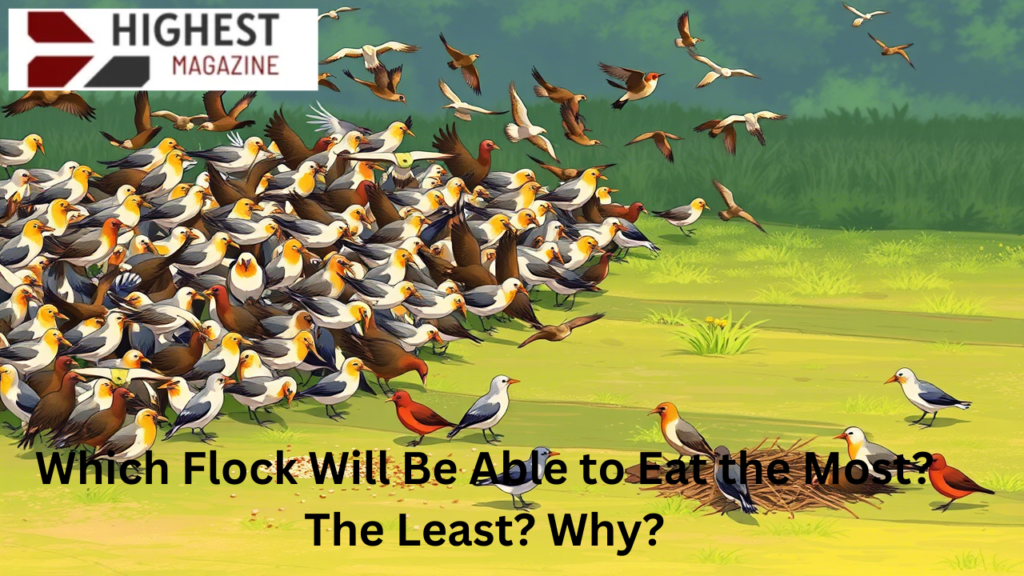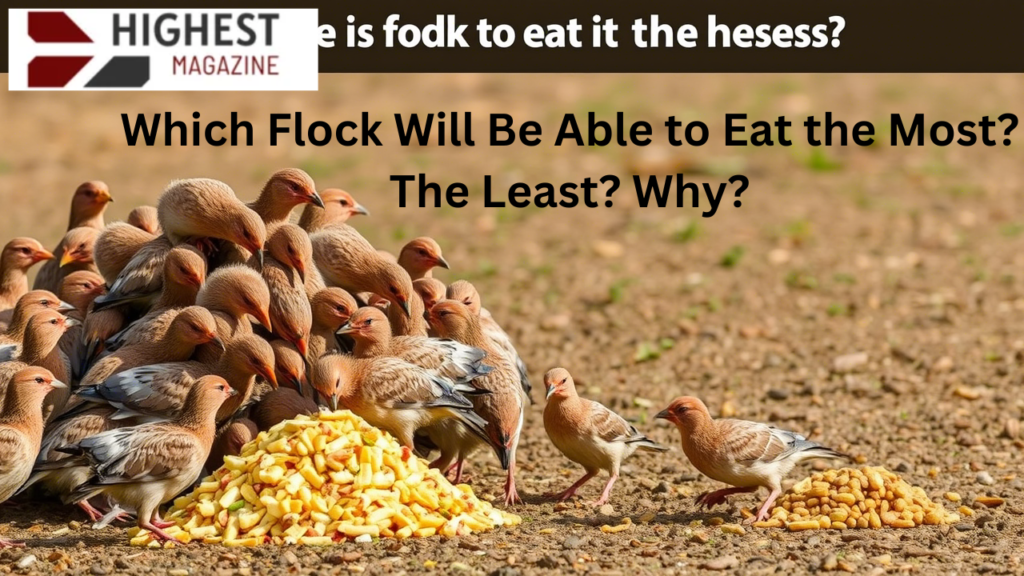Understanding which flock will be able to eat the most and which will eat the least requires analyzing several key factors, including food availability, beak structure, competition, and environmental conditions. Different bird species exhibit unique foraging behaviors and adaptations that determine their success in acquiring food.
Factors That Influence a Flock’s Eating Success
1. Food Source
- Type of Food: The nature of the available food plays a crucial role. Seeds, insects, fruits, and tiny aquatic organisms present challenges and advantages.
- Availability: If food is scarce, competition increases, making it harder for some flocks to eat. Conversely, abundant food allows more opportunities for all birds to feed.
- Accessibility: Food that is easy to reach benefits birds with simple foraging strategies, while hidden food favors birds with specialized skills or adaptations.

2. Beak Structure
- Birds have evolved beaks tailored to specific diets. A bird’s beak determines how efficiently it can consume different types of food.
- Example:
- Birds with short, strong beaks, such as finches, excel at cracking seeds.
- Birds with long, thin beaks, such as hummingbirds, can extract nectar from flowers.
- Birds with hooked beaks, such as hawks, efficiently tear into prey.
3. Competition
- The size of the flock impacts food consumption. A smaller flock may have less competition, allowing each bird to consume more.
- Intra-flock competition: Dominant birds often eat first, while weaker or smaller birds may struggle to get enough food.
- Inter-species competition: Other animals competing for the same food source can reduce the available supply.
4. Environmental Conditions
- Weather: Rain, wind, or extreme temperatures can impact food availability and foraging behavior.
- Terrain: Open fields, dense forests, wetlands, or urban areas offer different challenges and benefits depending on the bird species.
Comparison of Different Flocks
Scenario 1: Seed-Based Environment
- Flock A: Contains birds with short, strong beaks (e.g., finches, sparrows).
- Flock B: Contains birds with long, thin beaks (e.g., hummingbirds, warblers).
- Food Source: Abundant seeds scattered on the ground.
- Analysis:
- Flock A will eat the most since their beak structure is adapted to seed consumption.
- Flock B will eat the least because their beaks are unsuitable for cracking and consuming seeds.
Scenario 2: Insect-Rich Environment
- Flock A: Includes birds with strong, pointed beaks (e.g., woodpeckers, kingfishers).
- Flock B: Includes birds with short, thick beaks (e.g., pigeons, doves).
- Food Source: High insect population in trees and soil.
- Analysis:
- Flock A will eat the most since their beaks are adapted for catching and consuming insects.
- Flock B will eat the least as their beaks are not designed for efficient insect hunting.
Scenario 3: Competition and Scarcity
- Flock A: Small group of birds in an area with limited food.
- Flock B: Large group of birds in an area with abundant food.
- Analysis:
- Flock A may eat more per individual since the group has less competition.
- Flock B may eat the least per individual because competition is higher, despite food abundance.

Also Read: Which Reason to Invest Resonates the Most with You? Why?
Climax
The flock that eats the most depends on food type, beak structure, competition levels, and environmental conditions. Birds with the most suitable beak adaptations for the available food source will have the highest success. In contrast, flocks that face intense competition, have inappropriate beak structures for the food available, or struggle with environmental challenges will eat the least. Understanding these dynamics is crucial in bird conservation and ecological studies.
























